Images depicting people smiling in press vests, hugging their children and holding cameras filled the presentation screen — the names of each person appearing in under each photo: Hassan Farajallah, Amal Zahed, Rabih Al Maamari and Alaa Taher Al-Hassanat.
These were only some of the names included in a vigil on Monday, Dec. 11 to honor the 60+ journalists killed in Gaza in recent months. Held at the Chicago Art Department in Pilsen, members of the Chicago press and the public came together to honor the lives lost and express their solidarity for the journalists working in Gaza.
“I, along with everyone else who helped organize this, felt that there wasn’t enough attention paid to our colleagues that have been killed,” event organizer Carlos Ballesteros, 30, of Chicago said. “We didn’t want to let any more time go by without doing something about that.”
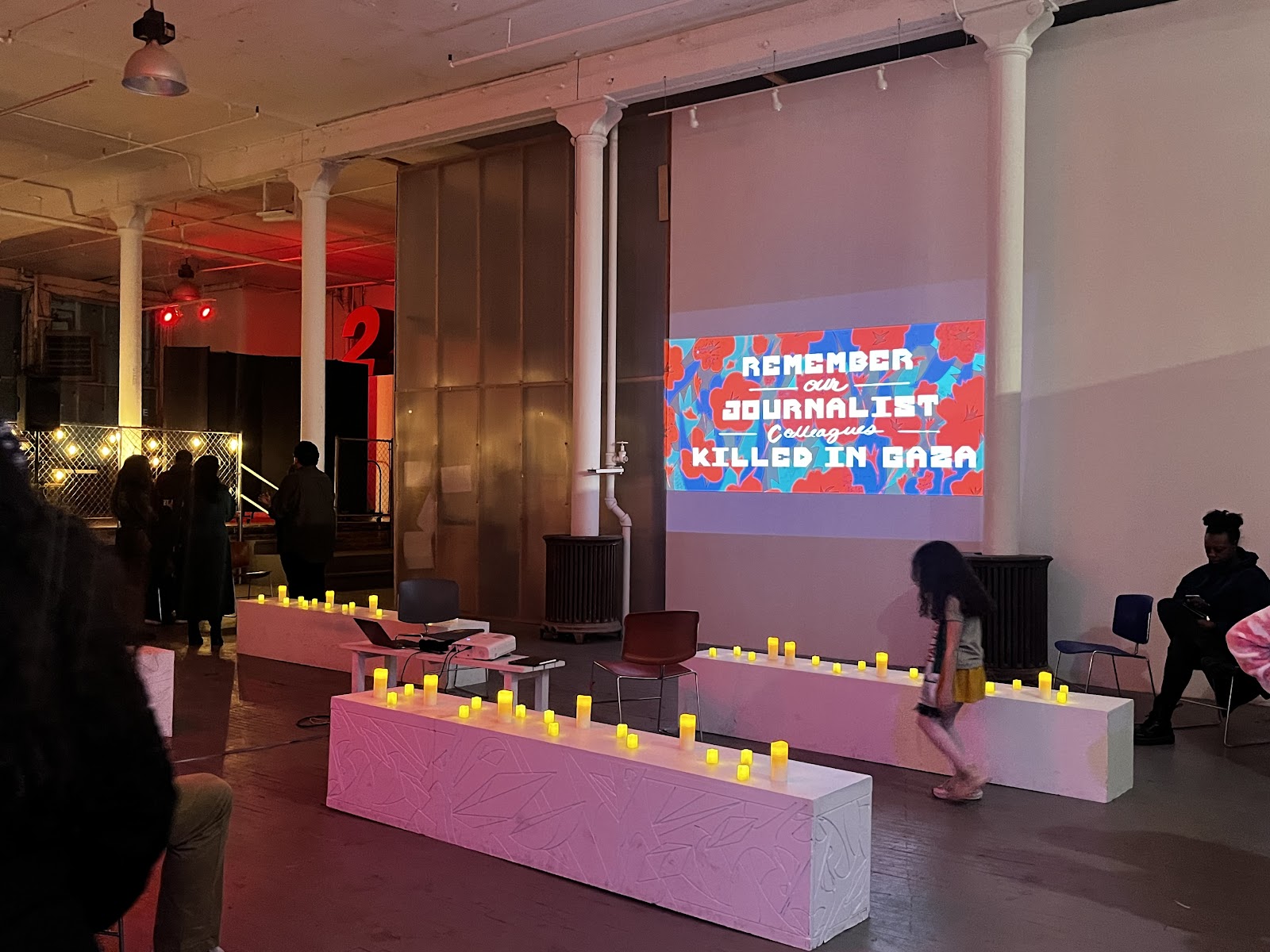
The Chicago Art Department reached full capacity before the beginning of the vigil, and conversation buzzed with topics of growing misinformation to how fellow journalists can offer support to one another.
“Part of mourning practices is gathering, and for us to actually take a stand together in a space of mourning and healing affirms that their lives matter,” Yasmin Zacaria Mikhaiel, 27, of Chicago said.
The entire space was lit by individual candles placed on white benches in the center of the room, each one representing a reporter who lost their life amid the ongoing conflict between Israel and Palestine.
The night of remembrance included remarks from multiple speakers such as Chicago Sun-Times columnist Rummana Hussain and Mikhaiel, who is a digital producer of City Bureau. Speakers called for journalists to speak up and stand in solidarity with their colleagues in Gaza.
“It’s important for journalists to develop a political consciousness of their own and use that to inform their reporting from where they look for stories, to who they want to write for and who they’re going to write about,” Ballesteros said.
Other speakers also expressed the need for ending censorship for media workers.
“Our duty as journalists is to support each other no matter where we are in the world because we all do one thing – we expose the truth,” said Diane Bou Khalil, 26, a reporter for Borderless Magazine.
After the slideshow presentation, attendees held 72 seconds of silence in acknowledgement of each person being honored. Organizers later played a clip from Palestinian journalist Yara Eid’s Instagram page, in which she shared the story of her mentor and boss, Roshdi Al Sarraj, a Palestinian journalist.
She shared Sarraj’s story along with others through social media to showcase the journalist’s efforts to continue to report to the best of their ability.
“I’m taking a lot of cues from our Gazan colleagues, and just trying to figure out new ways of doing journalism in a way that matters, in a way that speaks to people,” Nylah Burton, 28, of Washington, D.C. said.

Throughout the night, attendees were able to add to a collective installation dedicated to the reporters and their families in Gaza. Reporter notebooks, sharpies and tape were made available for messages to be written and displayed on an empty wall in the space.
“We wanted to make sure that our killed colleagues took center stage and so we developed the installation with that in mind,” Ballesteros said.
By the end of the night, the installation consisted of handwritten notes, flowers and candles.
The installation will remain on display at the Chicago Art Department, located at 1926 S Halsted St., until April 2024.

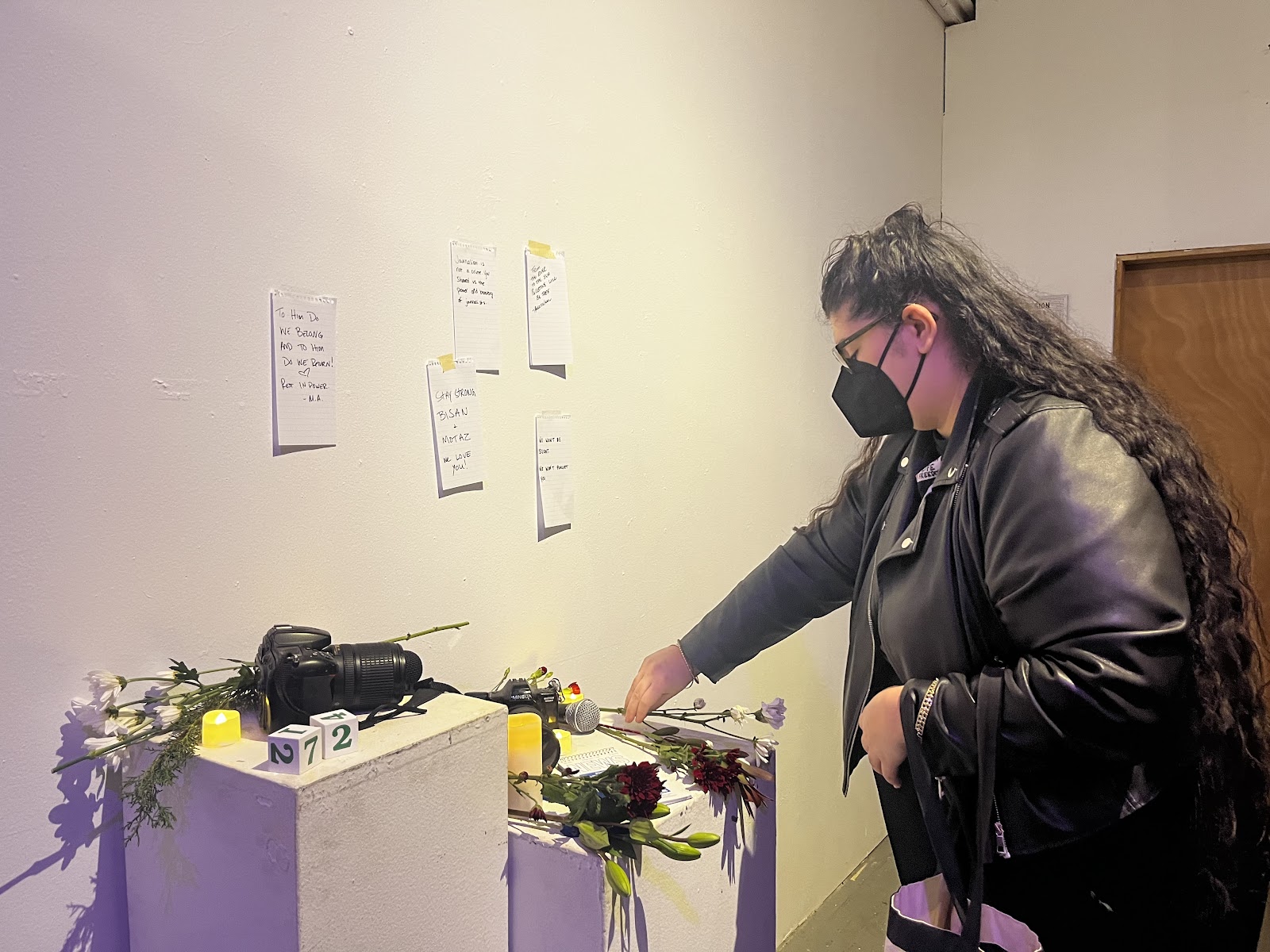
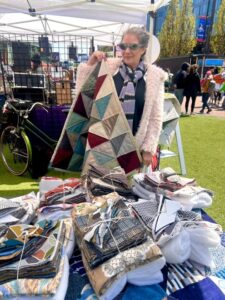
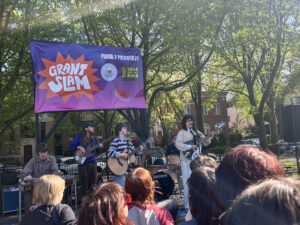

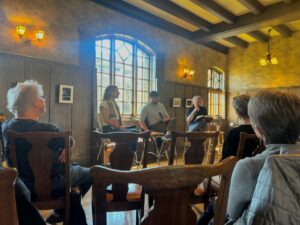
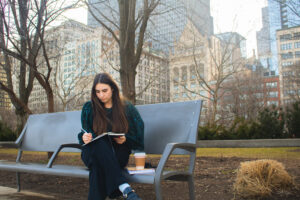


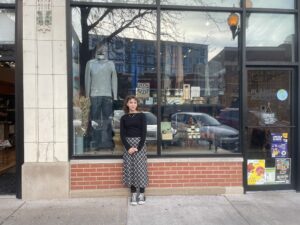


Be First to Comment